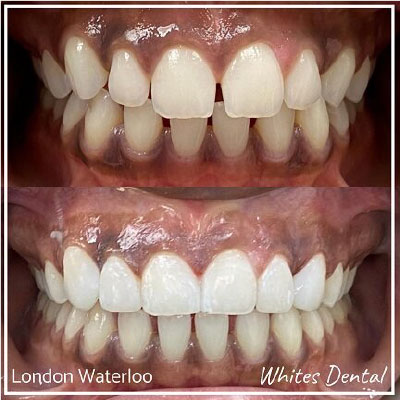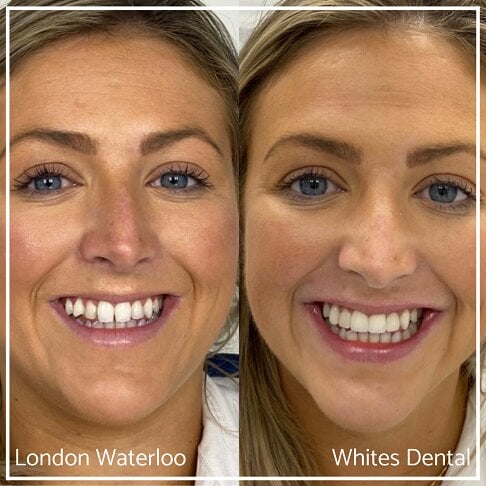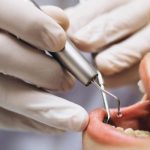Is it worth getting composite bonding?
Call us on 0208 616 0590 or email us at [email protected] to book an appointment.
Have Always Wanted
little as £4/day.

One of the great facets of modern dentistry is that if you wear, chip, damage or discolour a tooth, it isn’t always necessary to replace it! With treatments such as composite bonding, we can restore a tooth to its former glory and in a minimally invasive way.
What is composite bonding?
Composite bonding is a restorative and cosmetic treatment that works by building up layers of composite resin. This treatment is used primarily for small cosmetic changes and is popular with patients and dentists alike. There are multiple things cosmetic bonding can achieve, including:
- Reshaping a tooth
- Repairing damaged and chipped teeth
- Address discolouration
- Finishing touches to teeth after orthodontic treatment is finished
- Straighten and align a crooked tooth
How is composite bonding performed?
There are several steps involved in the composite bonding process, there are as follow-
- First your dentist will examine your teeth, meaning they will take a close look at the tooth in question and plan out how to restore it with composite bonding.
- Then it is the preparation stage where the tooth is roughened and etched using a gel, then bonding primers and resin are applied. The composite can then be used in stages and shaped, allowing your dentist to create a precise restoration in keeping with neighbouring teeth. It’s this slow and precise application that makes composite bonding so attractive to dentists, as it allows for a highly accurate result.
- Finishing touches- your dentist will then match the pigments with your tooth shade and harden the area with a high-intensity UV light. Meaning you can leave the your dental practice with a brand new smile and resume your normal activities straight away.
Is composite bonding the treatment for you?
Here are a few reasons why composite bonding can be very beneficial to you:
- Minimally-invasive treatment process: even though composite bonding needs removing some tooth enamel (on certain occasions- none is needed), this is a lot less than is necessary for a veneer.
- Bonding gives natural-looking results: the material used for composite bonding is carefully layered to match the subtle light-reflecting properties of real tooth enamel.
- Cost-effective: composite bonding is cost-effective compared to veneers. Veneers are more durable, but can become costly, especially if you want to treat multiple teeth.
- Fast treatment: composite bonding can be done in one visit, and you won’t usually need a follow-up appointment. Whereas, veneers and crowns will take at least two appointments to complete.
Certain disadvantages of a bonded tooth include:
- Not as long-lasting as veneers: whilst composite resin is a durable material that can last for as long as ten years, it doesn’t match the porcelain used for veneers. Crowns are also a more long-lasting option compared to composite bonding.
- Not stain-resistant: veneers are known for being highly resistant to stains. Unfortunately, the same cannot be said of composite bonding, which means making the right dietary choices and being disciplined with your brushing is very important if you want to keep your bonded tooth looking its best.
- More easily damaged: if you’re planning to choose composite bonding, you should be prepared to make a conscious effort to avoid anything that might break or damage the tooth. Avoid bad habits like chewing your fingernails, pencils and biting on ice cubes, as this can do so. If you’re involved in contact sports, be sure to wear a sports mouthguard to protect your bonded tooth (and your other teeth) from the risk of trauma. Although a bonded tooth is more disposed to to damage, it is quick and easy to repair.
Composite bonding: aftercare
It is essential to be aware that dental bonding is more prone to staining and chipping compared to veneers and crowns. However, caring for your bonded tooth or teeth is straightforward and doesn’t require any special care. Here are some tips to make sure your bonded tooth lasts as long as possible:
- Brush: brush twice a day (morning and evening) for two minutes.
- Floss: floss along the gum line and carefully between the neighbouring teeth to the bonded tooth. You can also use interdental brushes, if you find flossing a challenge.

- Avoid habits that lead to wear: habits like biting fingernails, pens, and ice will almost certainly cause your bonded tooth to wear away or break. Protect your tooth from this risk by sticking to only food and drink and not objects!
- Drinking water: a lot of people underestimate the role water has to play in maintaining a healthy, clean mouth. Getting into the habit of drinking water after every meal will ensure your mouth is free of food particles and bacteria that might harm your bonded tooth, and indeed all your other teeth.
- Staining: do not forget that the composite resin used for tooth bonding will stain. Avoid smoking, sugary and dark-coloured food and drink such as coffee and red wine.
For more information on composite bonding, please visit our cosmetic dentistry homepage via the link below – https://www.whitesdental.co.uk/cosmetic-dentistry/
If you’re serious about composite bonding, talk to one of our dentists. They can advise you about the best course of treatment for your mouth — and your budget. Contact us on 0208 616 0590 today to book your orthodontist free consultation!
I am Dr Jeen. I am a qualified dentist and have written this article for Whites Dental.


